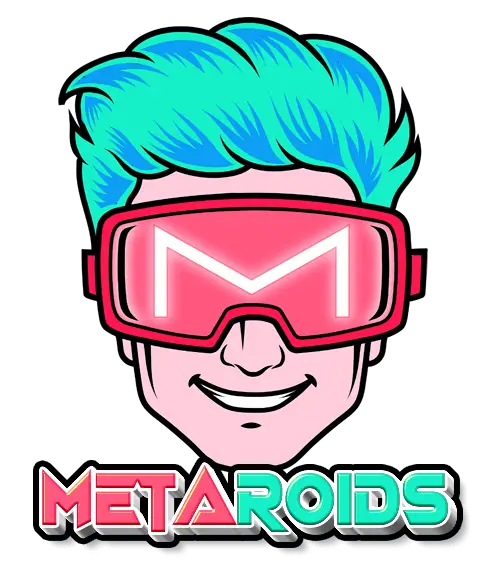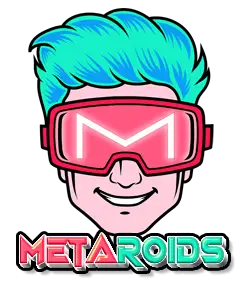If you’ve done some research into the Polkadot web3 ecosystem, chances are that probably have heard of Moonriver. But whether you’re a newbie or a veteran crypto investor or enthusiast, Moonriver has definitely done enough to deserve many’s attention.
More than a year ago, Moonriver won a parachain slot and launched on the Kusama network in August 2021. Fast forward to today, it has become one of the fast-growing blockchain ecosystems with 200 projects built on top of it.
Whether you want to learn about Moonriver in general, do deeper research without dealing with a lot of technical jargon, or determine whether it is a cryptocurrency that’s worth your involvement, this Moonriver guide explains its basic moving parts, as well as its features and use cases.
We will also guide you on how to stake your $MOVR tokens.
What is Moonriver?
Moonriver is a layer-1 parachain on Kusama that serves as a canary network to Moonbeam — a Polkadot parachain that is interoperable with Ethereum. It is a ‘testing ground’ for new features that would ultimately run on Moonbeam.
This setup is similar to how the Kusama main chain serves as a canary network to Polkadot, testing the latter’s new features in a clone environment but with real-world consequences to ensure as much accuracy as possible.
This enables the team to gauge the limitations and possible implications of new functionalities without potentially causing serious problems. But despite being a testing ground for parachain features, it also has its own token and governance model, offering users more benefits beyond being a virtual lab.
Moreover, Solidity developers (ETH builders) can easily deploy their decentralized applications (dApps) right inside Moonriver, requiring little to no modifications.
This convenience is enabled through the platform’s near-perfect cloning of Ethereum’s remote procedure call (RPC), subscriptions, accounts, and other important aspects. Essentially, Eth-based developers can launch their dapps on Moonriver and enjoy faster speeds without significantly changing the codes.
If you’re not familiar with the Polkadot layer-0 protocol, or how parachains and canary networks work, you first need to check out our Polkadot guide.
Moonbeam vs. Moonriver
While Moonbeam and Moonriver have a symbiotic relationship that complements each other, they operate as separate blockchains, each with its own capabilities and goals. Let’s start with Moonbeam first.
Moonbeam is a layer-1 smart contract blockchain on the Polkadot network, which allows Ethereum developers to deploy dApps in a much faster environment with cheaper gas fees without succumbing to centralization.
By leveraging the speed and affordability of the Polkadot blockchain and having an almost exact replication of Ethereum’s key features, it has been an ideal protocol for both Ethereum and even non-ETH developers to build on.
But while it has done a phenomenal job of offering an alternative, and arguably, more effective environment for ETH developers, it faces the same hurdles as other blockchain networks, such as how to test out new features without running into systematic trouble.
In rare cases of catastrophic bugs and failures, Moonbeam may receive an overwhelming backlash that could hurt its image and competitive edge. This is the reality of new protocol implementations, you never know what could happen once a new iteration goes live.
While deploying new protocol upgrades straight on the mainnet can surely provide valuable insights and genuine feedback from users, it’s a double-edged sword that can potentially create more problems than solutions. This is why most projects utilize the so-called ‘testnets’ before making features go live on the main network.
Ironically, testing on testnets will never be the same as testing on mainnets since they don’t involve tokens with real economic value, have very few transactions actually taking place, and are centralized. Polkadot championed the idea of canary networks to bring ‘feature testing’ to a whole new level, which has been adopted by many Moonbeam applications through Moonriver.
Moonriver provides an almost perfect virtual environment to help the Moonbeam network generate dependable data without risking real-world pilot testing. Both platforms also have their own tokens, dapp ecosystem, and respective communities.
What is MOVR?
MOVR is the utility token of Moonriver that is primarily used to govern and secure the network, as well as pay for gas fees. It has the same token supply and economics as Moonbeam’s $GLMR token.
Use Cases of MOVR
Holders can utilize MOVR to pay for fees while using the Moonriver network. MOVR also serves as a governance token, allowing holders to submit proposals, vote on critical issues, and elect council members.
It also supports the network’s ‘gas metering,’ incentivizes collators, and helps augment the network’s decentralization aspect through staking. This is where it gets interesting for users.
If you want to stake MOVR, you need to buy the tokens first. We cover that in the next section.
How Can I Invest in Moonriver (MOVR)?
You can buy MOVR tokens in two ways: through a centralized exchange (CEX) or a decentralized one (DEX). Purchasing the cryptocurrency on a CEX requires creating an account, usually involving KYC.
First, you need to check Moonriver’s available trading pairs. You will see a lit of CEXs and DEXs that offer the trading of MOVR. Choose one and create an account.
If you want to invest in MOVR through a DEX, you don’t have to surrender your identity, but you’ll need to create your own wallet first through MetaMask and then add some funds to it. Your options will also be limited since there are only a couple of DEXs that trade MOVR.
Once MetaMask is installed, go here and scroll to the bottom of the page and click Connect to MetaMask.

You can buy MOVR on Solarbeam immediately once you have the funds.
How to Stake MOVR?
Staking MOVR allows you to passively earn interest on your holdings while contributing to the security and maintenance operations of Moonriver.
Do you want to test if MOVR really has the moves?
Here’s a step-by-step on how to stake MOVR tokens:
Connect to Moonriver Network
To access the staking dashboard, head over to Moonriver’s staking portal and connect your MetaMask wallet, then click ‘Next.’ After linking the wallet, connect your account by clicking ‘Connect.’
Next, click ‘Approve‘ and ‘Switch Network.’
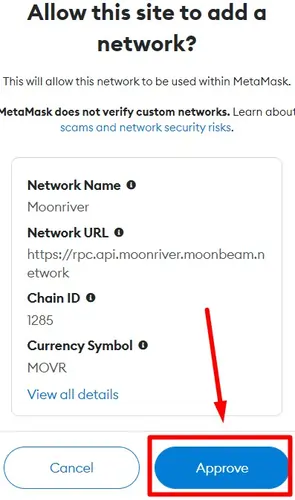
Access the Dashboard
The page will now transfer you to the dApp’s dashboard, where you can view your balance and other staking data.
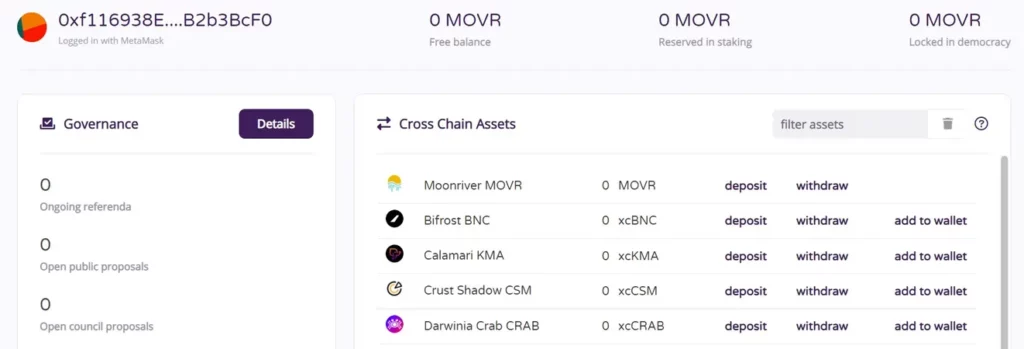
Note that you can also test the staking features without losing real assets by switching to the ‘Moonbase Alpha’ testnet. But the tokens you earn here will have no monetary value.
When you’re confident and ready to stake with real MOVR tokens, choose Moonriver.
Select a Collator Candidate
On the dashboard, scroll down and select the ‘Manage delegations’ button to choose a collator candidate whom you’ll delegate your token.
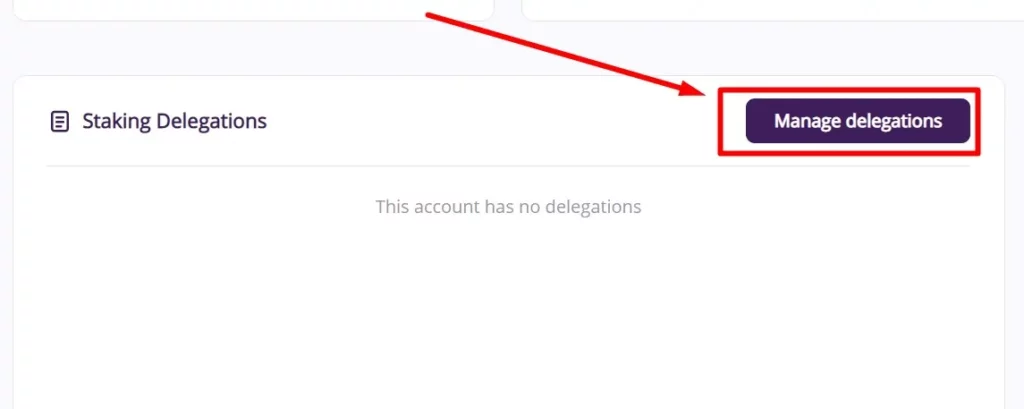
Once inside, you can now choose your collator. Carefully verify the collator and check their address.

Enter the token amount you intend to stake and select ‘Delegate.’
Sign the transaction once MetaMask pops up. Once done, your token is now successfully delegated to a collator. You can confirm this once your dashboard updates and includes your latest transaction.
What Makes Moonriver Special?
Convenience is the main selling point of Moonriver, and Ethereum developers only have to ‘plug and play’ their dApps on the platform to make them work. Moonbeam projects typically utilize the Moonriver network for launching new upgrades and features. That is the purpose of a canary blockchain — to offer a real-world testbed before launching on Moonbeam.
Instead of having to reconfigure a big chunk of application codes just to ‘fit’ applications on a new platform, Moonriver offers an easy ramp to help dapps deploy and test their creations in the fastest way possible.
But while Moonriver has successfully cloned Moonbeam’s Ethereum-like environment, it is more than a glorified testnet. The idea is that since Moonriver offers more flexibility and looser governance, it is able to execute faster and enables developers to take an aggressive approach to development and experimentation, which could lead to more innovative results.
Plus, all the features to be deployed on Moonbeam will happen on Moonriver first, so it will always have a first-mover advantage in that regard.
Join our newsletter as we build a community of AI and web3 pioneers.
The next 3-5 years is when new industry titans will emerge, and we want you to be one of them.
Benefits include:
- Receive updates on the most significant trends
- Receive crucial insights that will help you stay ahead in the tech world
- The chance to be part of our OG community, which will have exclusive membership perks
